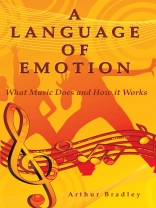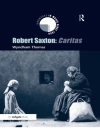These lively, informative essays, all related to music, are as accessible as a chatty bedside reader. A central theme is listener response, and the techniques and structures that mold it.
The story starts with sound waves, the ear, and the brain. Did song come before speech? Was it a factor in evolution? Some think singing helps complete the wiring of that organic work-in-progress, the infant brain.
Check out the frequency doubling that built our familiar scale. Learn where the word organizing came from. Follow development of the instruments as they achieved volume, accurate intonation, range, and consistent timbre.
There is criticism, but little disparagement. Any willing audience deserves respect. Musical examples come from Tin Pan Alley as often as the opera. Whether at a jazz club or the concert hall, the writer cannot hide his impatience with artists seeking to educate or intimidate.
Music can be recreation or vocation. Does your instrument match your personality or some physical attribute? We instantly distinguish a bell, a piano, and a guitar; why not a clarinet, flute, or violin? What does the conductor do? A Language of Emotion embraces such matters.
The relatively imprecise science of Psychology examines music working its magic. We all have favorites. Is it hype and marketing and peer influence, or do our choices make personal statements? Music, politics, religion, and social forces are twisted threads in the fabric of civilization.
Nothing reflects the spirit of an era better than the works of its most creative individuals. In most cases, they blend smoothly in sequence. Monteverdi, Beethoven, and Stravinsky, to name just three, clearly got ahead of the curve and helped define the world around them.
Об авторе
Arthur Bradley was born in New York City in 1926. He was drafted out of college into the Navy. The G.I. Bill put him thru grad school (Organic Chemistry, Columbia). For recreation he played the clarinet, was actively involved in community theater, and entered weekend road races. Arthur retired in 1997 after a rewarding career as an industrial scientist and is still actively consulting in the field of nutrition.
Over the years he wrote many articles on popular music for a record auction quarterly, and collections were published in 1995 and 2005. He lives with his wife Pat in Floral Park NY, in frequent contact with his two children and three grandchildren, and his accumulation of 78 RPM recordings.












